Landschlacht, Switzerland, Friday 18 December 2020
Like myself, there are movies that don’t get the recognition they deserve.
The 1995 film, The Englishman who Went up a Hill but Came down a Mountain is based on a story about a wee Welsh village of Taff’s Well in the old county of Glamorgan and its neighbouring Garth Hill, but due to the 20th century urbanization of the area, the movie was filmed in more rural Llanrhaeadr-ym-Mochnant and Llansilin in Powys.

(Taff’s Well (Welsh: Ffynnon Taf), is a semi-rural village, community and electoral ward located at the south easterly tip of Rhondda Cynon Taf (county borough), 6 miles (9.7 km) to the north of Cardiff, the capital city of Wales.
Known locally as the ‘Gates to the Valleys‘.

Above: Taff’s Well railway station
It is separated from the village of Gwaelod Y Garth by the River Taff.

Above: The River Taff
Taff’s Well is distinguished because it contains the only thermal spring in Wales.
The tepid water is thought to rise along a fault-line from the Carboniferous Limestone, in somewhat similar manner to the warm springs at Bristol and Bath.
Various religious groups regard it as a spiritual site.

Above: Entry to Taff’s Well Thermal Spring

Above: Taff’s Well Thermal Spring
Garth Mountain overlooks the village and was the inspiration for the fictional “Ffynnon Garw“, featured in the book and film The Englishman Who Went Up a Hill But Came Down a Mountain.)

Above: The Garth

The film is set in 1917, with World War One in the background.
Two English cartographers, the pompous George Garrad (Ian Mcneice) and his junior, Reginald Anson (Hugh Grant) arrive at the fictional Welsh village of Ffynnon Garu (pronounced “Finian Garoo“)(Welsh: rough fountain / rough spring) to measure its “mountain” – only to cause outrage when they conclude that it is only a hill because it is slightly short of the required height of 1,000 feet (305 metres).

Above: (left) Garrad and (right) Anson
Narrator: For some odd reason, lost in the mists of time, there’s an extraordinary shortage of last names in Wales.
Almost everyone seems to be a Williams, a Jones, or an Evans.
To avoid widespread confusion, Welsh people often add an occupation to a name.
For example, there was “Williams the Petroleum” and “Williams the Death“.


There was “Jones the Bottle” (alcoholic) and “Jones the Prize Cabbage”, which described his hobby and his personality.
“Evans the Bacon” and “Evans the End of the World” (activist).

But one man’s name was a puzzle and it wasn’t until I was 10 years old that I asked my grandfather about the man with the longest and most enigmatic name of all.
Grandfather: [to the narrator at age 10] The Englishman Who Went Up a Hill but Came Down a Mountain?
Now there’s a long name for you.
And a long story.
You are not going to fidget, are you?
For this is a story… an epic story.
Yes, epic.

The villagers, aided and abetted by wily local, Morgan the Goat (his nickname not his species)(Colm Meaney) and the Reverend Robert Jones (Kenneth Griffith) who, after initially opposing the scheme, grasps its symbolism in restoring the community’s war-damaged self-esteem, conspire to delay the cartographers’ departure while they build an earth mound on top of the hill and make it high enough to be considered a mountain.

Above: (left) Morgan the Goat and (right) the Reverend Jones
“All this fuss over what?
Is it a hill, is it a mountain?
Perhaps it wouldn’t matter anywhere else, but this is Wales.

Above: Flag of Wales
The Egyptians built pyramids, the Greeks built temples, but we did none of that, because we had mountains.
Above: Pyramids of Giza, Egypt

Above: The Parthenon, Athens, Greece
Yes, the Welsh were created by mountains:
Where the mountain starts, there starts Wales.
If this isn’t a mountain—well, if this isn’t a mountain, then Anson might just as well redraw the border and put us all in England, God forbid.“

Welsh hills becoming mountains is not unique to the plot of The Englishman who….
Foel Penolau is a mountain close to Moel Ysgyfarnogod (northernmost mountain of the Rhinogydd) in Snowdonia (national park), North Wales, and is the northernmost summit of the Rhinogydd (a range of mountains east of Harlech), overlooking Llyn Trawsfynydd (a large man-made reservoir situated near the village of Trawsfynydd in Gwynedd (county).
From the summit it is possible to see the towns of Porthmadog and Blaenau Ffestiniog.
As a result of a revised survey of its topographical prominence, Foel Penolau gained mountain status in December 2018 when its prominence was measured to be above 30 metres.
The top of Foel Penolau is reputed to be one of the rockiest summits in Snowdonia, where hands must be used to attain the summit.
The summit is on a large smooth slab of rock which is the surface of the outcrop from which the top was formed.

Above: Foel Penolau
Mynydd Graig Goch is a Snowdonia hill that became a mountain in September 2008 when it was measured by three Welshmen with GPS equipment and found it to be 30 inches taller than was thought, thereby exceeding the height required to classify it as a 2000-foot mountain by six inches.
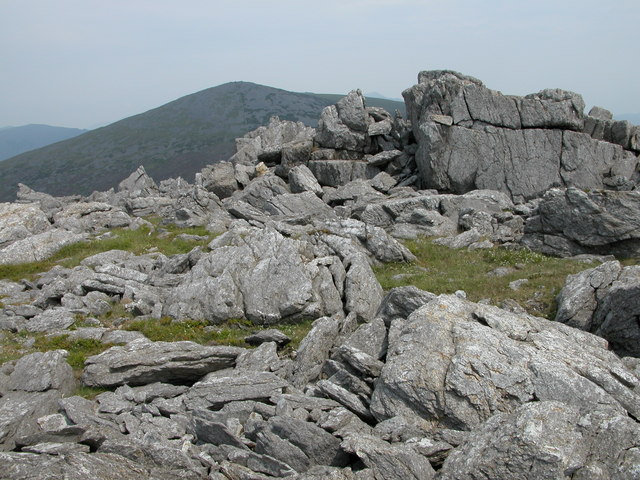
Above: Mynydd Graig Goch
There is a Mount Massive in Colorado.

Above: Mount Massive
Contention arose over whether Massive or its neighbour Mount Elbert, which have a height difference of only 12 feet (3.7 metres), was the highest Rocky Mountain and the second highest mountain in the contiguous United States, after Mount Whitney.

Above: Mount Whitney
This led to a dispute which came to a head with the Mount Massive supporters building large piles of stones on the summit to boost its height, only to have the Mount Elbert proponents demolish them.
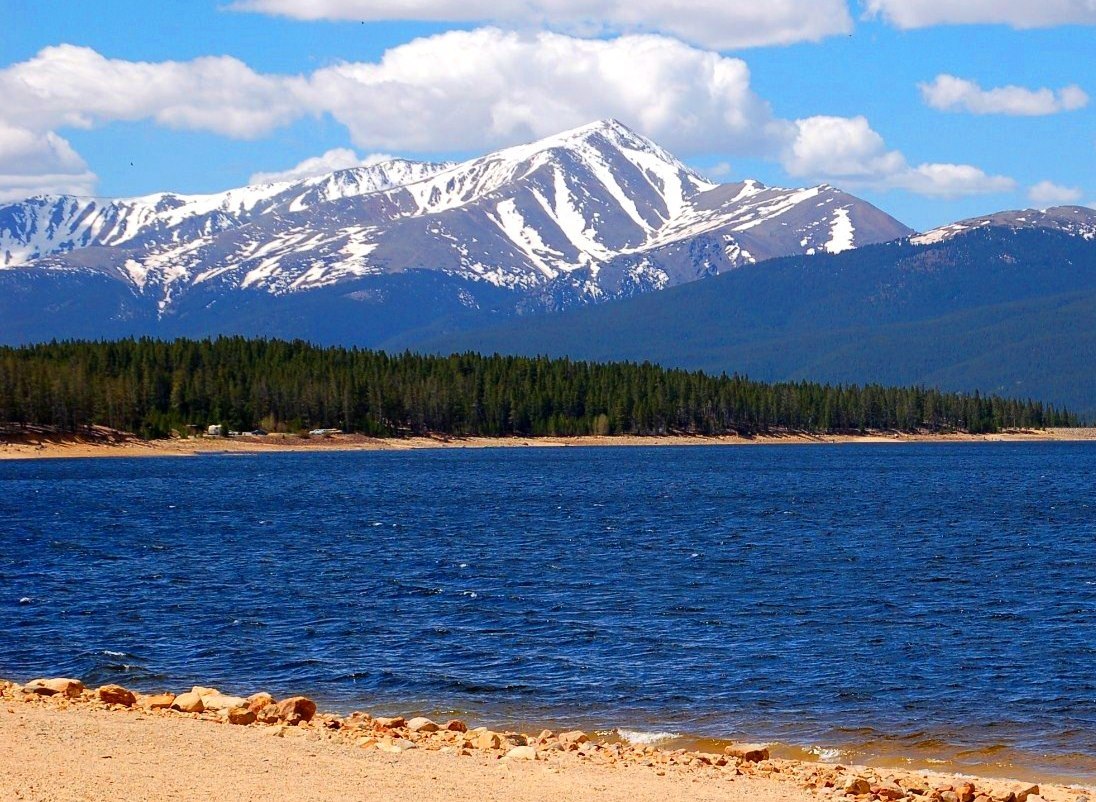
Above: Mount Elbert
I like Wales.
I have done some travelling in Wales, lived in Cardiff for a time and even had a Welsh girlfriend for a time in the time before I met my wife.


Above: Images of Cardiff
The list of places I have visited in Wales reads like an index found in a travel guide:
- Llanidloes

- Borth

- Machynlleth

- Porthmadog

- Harlech

- Barmouth

- Bala Lake

- Llangollen

- Dolgellau

- Betws-Y-Coed

- Conwy

- Beaumaris

- Bangor

- Caernarfon, and, not forgetting….

- Llanfairpwllgwyngyllgogerychwyrndrobwllllantysiliogogogoch (the longest place name in Europe and the second longest one-word place name in the world – after New Zealand’s Taumatawhakatangihangakoauaruotamateaturipukakapikimaungahoronukupokaiwhenuakitanatahu.)

Llanfair PG (to give one of its shorter forms) – its long name was supposedly contrived in 1869 as an early publicity stunt to give the station the longest name of any railway station in Britain.

And that is what this is all about:
Being known for something.
“There are times when all the world’s asleep
The questions run too deep
For such a simple man.
Won’t you please, please tell me what we’ve learned
I know it sounds absurd.
Please tell me who I am.“
“The first mountain in Wales.
It is something we have boasted about since time immemorial.
We didn’t have the biggest mountains of the North or the beautiful mountains of mid-Wales, but we could claim we lived in the shadow of the first mountain inside the Welsh border.“

Guinness World Records, known from its inception in 1955 until 2000 as The Guinness Book of Records and in previous United States editions as The Guinness Book of World Records, is a reference book published annually, listing world records both of human achievements and the extremes of the natural world.

The brainchild of Sir Hugh Beaver, the book was co-founded by twin brothers Norris and Ross McWhirter in Fleet Street, London, in August 1954.

The book itself holds a world record, as the best-selling copyrighted book of all time.
As of the 2021 edition, it is now in its 66th year of publication, published in 100 countries and 23 languages, and maintains over 53,000 records in its database.

The international franchise has extended beyond print to include television series and museums.
The popularity of the franchise has resulted in Guinness World Records becoming the primary international authority on the cataloguing and verification of a huge number of world records.
The organisation employs record adjudicators to verify the authenticity of the setting and breaking of records.

Above: Japanese competitive eater Takeru Kobayashi with two Guinness World Record certificates
Recent editions have focused on record feats by person competitors.
Competitions range from obvious ones such as Olympic weightlifting to the longest egg tossing distances, or for longest time spent playing Grand Theft Auto IV or the number of hot dogs that can be consumed in three minutes.

Besides records about competitions, it contains such facts such as the heaviest tumour, the most poisonous fungus, the longest-running soap opera and the most valuable life-insurance policy, among others.
Many records also relate to the youngest people to have achieved something, such as the youngest person to visit all nations of the world (Maurizio Giuliano).

Each edition contains a selection of the records from the Guinness World Records database, as well as select new records, with the criteria for inclusion changing from year to year.
The retirement of Norris McWhirter from his consulting role in 1995 and the subsequent decision by Diageo Plc to sell The Guinness Book of Records brand have shifted the focus of the books from text-oriented to illustrated reference.
A selection of records are curated for the book from the full archive, but all existing Guinness World Records titles can be accessed by creating a login on the company’s website.

Above: The North Beach (Nazaré, Portugal) listed on the Guinness World Records for the biggest waves ever surfed.
Applications made by individuals for existing record categories are free of charge.
There is an administration fee of $5 to propose a new record title.
A number of spin-off books and television series have also been produced.
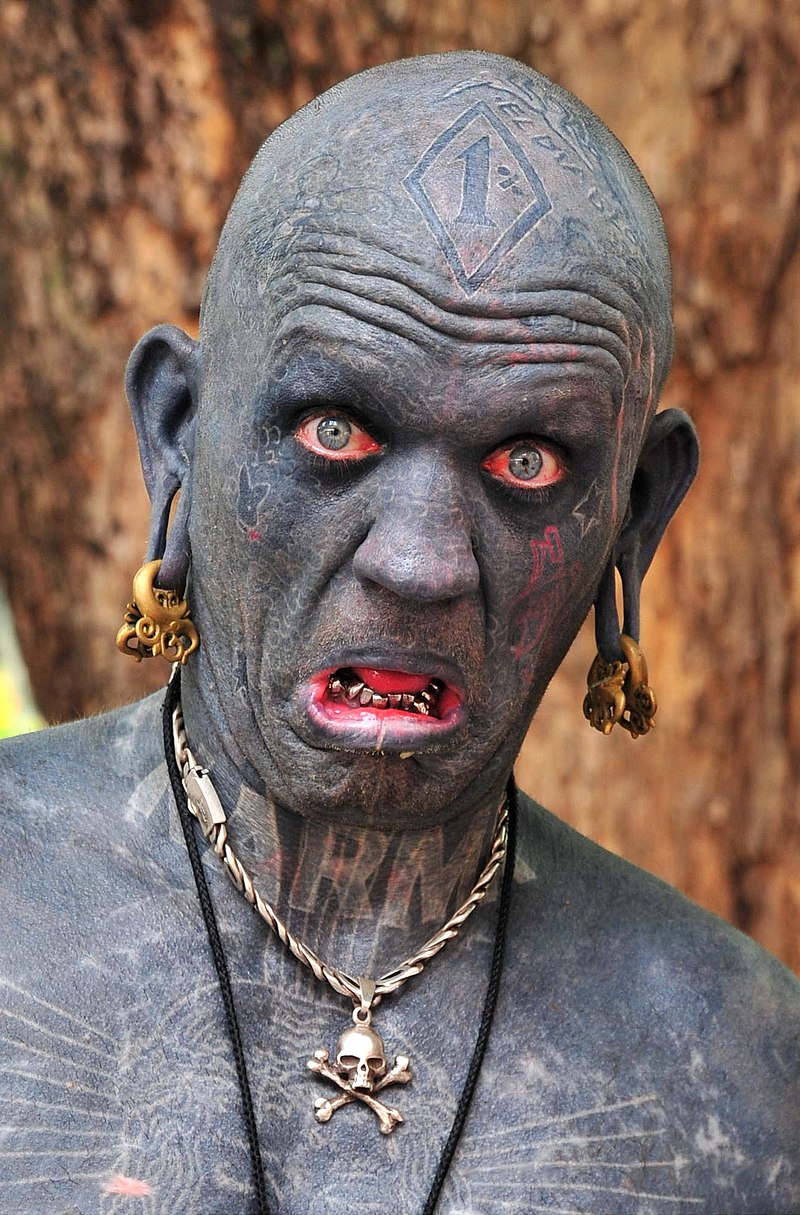
Above: Lucky Diamond Rich is “the world’s most tattooed person” and has tattoos covering his entire body. He holds the Guinness World Records title as of 2006.
Guinness World Records bestowed the record of “Person with the most records” on Ashrita Furman of Queens, NY, in April 2009.
At that time, he held 100 records and currently holds over 220.

Above: Ashrita Furman
In 2005, Guinness designated 9 November as International Guinness World Records Day to encourage breaking of world records.
In 2006, an estimated 100,000 people participated in over 10 countries.
Guinness reported 2,244 new records in 12 months, which was a 173% increase over the previous year.
In February 2008, NBC aired The Top 100 Guinness World Records of All Time and Guinness World Records made the complete list available on their website.

Above: Sultan Kösen (Turkey) is the tallest living person (251 centimetres / 8 ft 2.82 in) since 17 September 2009, as verified by Guinness World Records
For many records, Guinness World Records is the effective authority on the exact requirements for them and with whom records reside, the company providing adjudicators to events to determine the veracity of record attempts.
The list of records which the Guinness World Records covers is not fixed, records may be added and also removed for various reasons.
The public are invited to submit applications for records, which can be either the bettering of existing records or substantial achievements which could constitute a new record.
The company also provides corporate services for companies to “harness the power of record-breaking to deliver tangible success for their businesses.”

Above: Fiann Paul, Alex Gregory and Carlo Facchino aboard Polar Row, the most record breaking expedition in history
Guinness World Records states several types of records it will not accept for ethical reasons, such as those related to the killing or harming of animals.
Several world records that were once included in the book have been removed for ethical reasons, including concerns for the well being of potential record breakers.
For example, following publication of the “heaviest fish” record, many fish owners overfed their pets beyond the bounds of what was healthy, and therefore such entries were removed.
The Guinness Book also dropped records within their “eating and drinking records” section of Human Achievements in 1991 over concerns that potential competitors could harm themselves and expose the publisher to potential litigation.
These changes included the removal of all spirit, wine and beer drinking records, along with other unusual records for consuming such unlikely things as bicycles and trees.
Other records, such as sword swallowing and rally driving (on public roads), were closed from further entry as the current holders had performed beyond what are considered safe human tolerance levels.

Above: Steven Petrosino drinking 1 litre of beer in 1.3 seconds in June 1977. Petrosino set record times for 250 ml, 500 ml and 1.5 litres as well, but Guinness accepted only the record for one litre. They later dropped all beer and alcohol records from their compendium in 1991, and reinstated the records in 2008.
There have been instances of closed categories being reopened.
For example, the sword swallowing category was listed as closed in the 1990 Guinness Book of World Records, but has since been reopened with Johnny Strange breaking a sword swallowing record on Guinness World Records Live.

Above: Johnny Strange
Similarly, the speed beer drinking records which were dropped from the book in 1991, reappeared 17 years later in the 2008 edition, but were moved from the “Human Achievements” section of the older book to the “Modern Society” section of the newer edition.
As of 2011, it is required in the guidelines of all “large food” type records that the item be fully edible, and distributed to the public for consumption, to prevent food wastage.
Chain letters are also not allowed:
“Guinness World Records does not accept any records relating to chain letters, sent by post or e-mail.“
At the request of the US Mint, in 1984, the book stopped accepting claims of large hoardings of pennies or other currency.

For some potential categories, Guinness World Records has declined to list some records that are too difficult or impossible to determine.
For example, its website states:
“We do not accept any claims for beauty as it is not objectively measurable.“
An example of this was the record for the World’s Fastest Violinist, which was suspended as the Guinness World Records released a statement about this on one of the records on their Youtube Channel, due to pressure from Youtube personalities Brett Yang and Eddy Chen, who are the heads of the channel Twoset Violin.

Above: TwoSet Violin
Guinness World Records stated that they could not determine if the violinist in question was playing the notes correctly, and other attributes, such as clearness and articulation.
However, other categories of human skill relating to measurable speed such as “World’s Fastest Clapper” were instated.
On 27 July 2010, Connor May (NSW, Australia) set the record for 743 claps in 1 minute.

Above: Connor May
On 10 December 2010, Guinness World Records stopped its new “dreadlock” category after investigation of its first and only female title holder, Asha Mandela, determining it was impossible to judge this record accurately.

In 2018, Stuart Sobeske, a high-school student from Coldwater, Michigan, finally accomplished the feat he had spent the past six months preparing for:
He rode his unicycle up and down a runway at the Coldwater Airport for a little under an hour, and one by one, he solved Rubik’s cubes.
Eighty of them, to be exact.
“It felt amazing, like a weight had been lifted off my shoulders,” Sobeske told the local-news station WWMT at the end of his ride.
His relief wasn’t about finally hopping off his unicycle, though, so much as what would come next:
Once the paperwork is filed and the application approved, he — barring any upsets—had his feat immortalized in Guinness World Records.
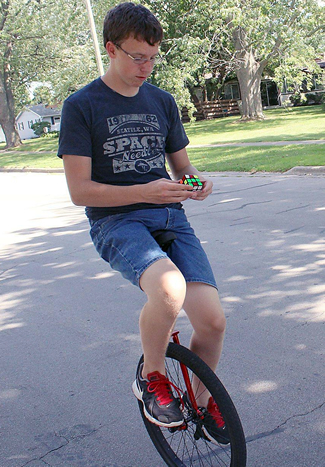
Above: Stuart Sobeske
The origin story for this particular feat is a pretty straightforward one:
Stuart always dreamed of having his name in the Guinness Book of World Records.
So he started thinking of things he was good at.
He was good at unicycling, and also at Rubik’s cubes, and so, by logical extension, combining these two talents was his ticket to glory.
Well.
Maybe.
Glory is kind of a strong word.

Guinness World Records, which turns 60 years old today, is populated with a scattering of recognizable names:
There’s Elvis Presley, who even today remains the world’s best-selling solo artist.

Above: Elvis Presley (1935 – 1977)
There’s Edmund Hillary, who in 1953 was the first person to climb Mount Everest.
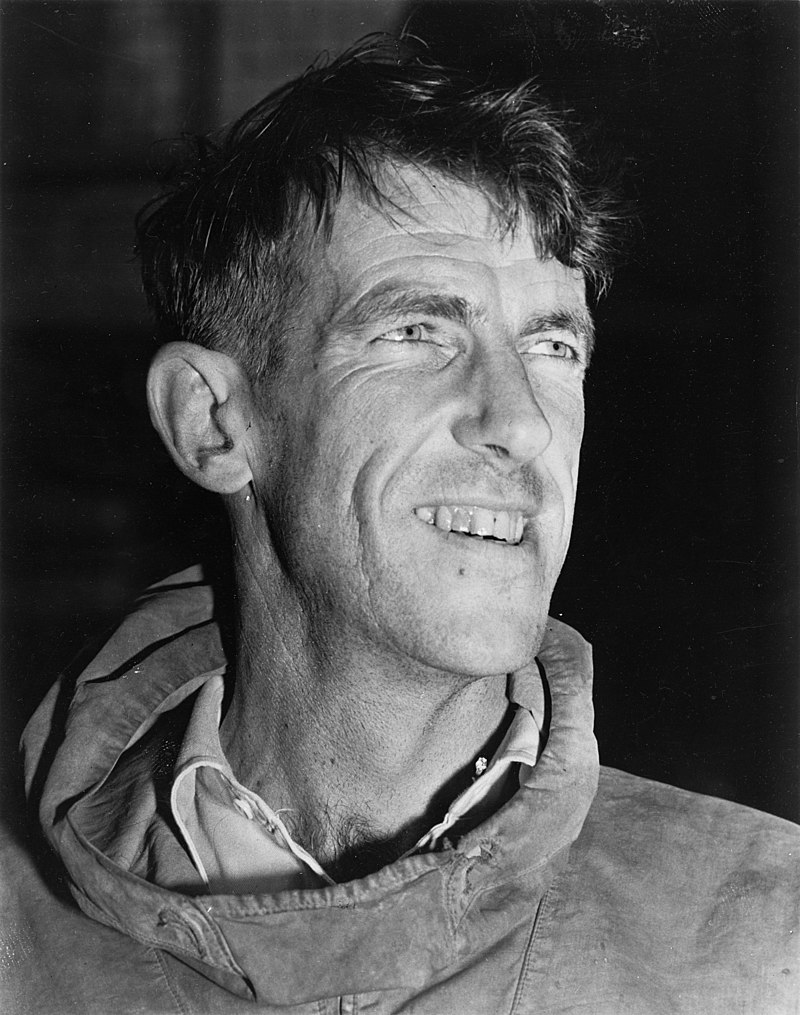
Above: Edmund Hillary (1919 – 2008)
There’s Michael Phelps, who broke eight swimming world records in Beijing in 2008 — and, in the process, the record for most gold medals won at a single Olympics.

Above: Michael Phelps
But all three made it into the book for accomplishments that are generally considered accomplishments in their own right — and in Guinness World Records, that makes them a minority.

Above: Suresh Joachim Arulanantham is a Tamil Canadian film actor and producer and multiple-Guinness World Record holder who has broken over 50 world records set in several countries in attempts to benefit the underprivileged children around the world. Some world record attempts are more unusual than others: he is pictured here minutes away from breaking the ironing world record at 2 days, 7 hours and 5 minutes, at Shoppers World, Brampton, Ontario.
Surrounding and outnumbering these names are others like Sobeske, people whose accomplishments exist only in relation to the lesser acts that came before them: wearing an extravagant number of socks on one’s foot (record: 152 socks), for example, or catching tennis balls with a bucket on one’s head (record: 48 balls) or drinking a liter of lemon juice through a straw (record: 24.41 seconds).



Before Sobeske, the record for most Rubik’s cubes solved on a unicycle was 28, in 2010.
It’s unclear from the Guinness website – http://www.guinnessworldrecords.com – how many times this particular record has been broken before.
But regardless, there now are at least two people in this world who have devoted hours to practicing their unicycling, and turned countless cubes around and around in their hands, in order to reach something that doesn’t bring them money or (in all likelihood) fame.
So what, exactly, does it bring them?

“The thing that motivates the person to win a race or an athletic performance is a mix of motivations similar to what you get in trivial things like setting bizarre records,” said Ian Robertson, a professor of psychology at Trinity College Dublin and the author of The Winner Effect: The Neuroscience of Success and Failure.

Human motivation can be sliced and diced into any number of categories — intrinsic versus extrinsic is one example — but one of the more well-known classifications is the “three needs” theory, which breaks motivation into, well, three needs: for achievement, for power, and for belonging.
With something like Guinness World Records, Robertson explained, the need for achievement can push people to pursue success in something, anything — the nature of the skill becomes less important than the fact that it exists at all.
“What you have is a burning achievement motivation, and someone maybe just doesn’t see the opportunity to satisfy that achievement in more conventional ways,” he said.
“So they find the strange niche.”
But tied up with that achievement motivation, he said, is a bit of the power motivation as well:
Setting an obscure record may not win the setter influence or widespread celebrity, but almost everyone who’s been declared “officially amazing” (the Guinness motto) has received the distinction precisely because they took the steps to make sure it became official — to make sure that they were, at the very least, recognized.
And actually securing that recognition, on top of actually breaking whatever record was broken, is a feat in itself:
Of the 40,000 to 50,000 applications the company receives each year, only around 5% become official world records.
Even fewer make it into the book.
Most of the accepted applications (both to create new records and to break existing ones) go straight into the company’s database.

In a 2008 interview with Freakonomics, Craig Glenday, the Guinness editor, said:
“We get ‘chancers’ writing to us on the off-chance that the potato chip they’ve just plucked from a packet is the world’s largest unbroken chip, or that the string of words their young child has spoken is the longest sentence by a one-year-old, or that their 400 consecutive pogo-stick jumps are a record.”

But to pass muster, he explained, a record must be measurable (“so we don’t accept the category for Ugliest Dog,” he said, “but we do accept the claim for the Most Wins of the Ugliest Dog World Championships”), superlative, breakable (with the exception of “significant firsts”), specific, and interesting.
This last qualifier is the one that separates records from simple facts.
Technically, daily life is chock-full of world records that pass unnoticed.

Out of all the people at The Atlantic’s office, for example, someone who has spent the greatest amount of time sitting at their specific desk: a claim that’s measurable, superlative, breakable if we all switch desks, I guess, and superlative.
(And verifiable, another Guinness requirement:
They built the desk last month.)

But interesting?
Not exactly.
But interesting or no, Guinness or no Guinness, we regularly bestow these small, mundane awards upon ourselves, explained Stephen Garcia, a professor of psychology at the University of Michigan who studies competition.
“People are always trying to find a way to make themselves seem like they’re at the top,” he said.
In psychology, the “optimal distinctiveness” theory argues that people walk through their lives on a tightrope between belonging and individuality.
The goal is to stand out, but not so much that they lose affiliation in the groups that help to form their identity.
“There’s a need for uniqueness and I think people cling to that in different ways,” he said.
When everyone is searching for their own brand of special, “they might see themselves as being number one in a particular dimension, and they might discount other things.”
For example, a university professor employed by a school towards the middle of the academic hierarchy “could say, ‘Well, I’m at the top school in Michigan,’ or ‘the top school in the Detroit metro area,’” Garcia said.
“Any time you create a scale or a dimension that’s measurable, you also create a kind of competition.”

And in fact, the specificity of a competition — how many people can even ride a unicycle, let alone solve a Rubik’s cube while doing so? — may add to its attractiveness.
A 2009 study by Garcia and a colleague found that when the number of people engaged in a contest increased, the less motivated each individual participant tended to feel.
The effect was especially pronounced among the people leading the pack:
“If you’re ranked 202 in something, and I’m 203, we’re both so far from the number-one standard that we’re going to be more cooperative,” Garcia explained.
But towards the top, that sense of collaboration disappears:
“If you and are I are number two and number three, we’re not going to share with each other, because we don’t want the other person to get ahead.”
Above: Stephan Garcia
The fact that an achievement is niche, in other words, doesn’t lessen the satisfaction that comes from reaching it.
From a pure numbers standpoint, the smallest, most obscure competitions — drinking lemon juice, wearing extra socks — may be more winnable, but winning is binary:
A person is the best or the most or the fastest, or they aren’t.
The appeal of Guinness World Records is the sheer number of ways it allows a person to become those things.
It’s the appeal of classifications in general, really.
Most people at The Atlantic have been sitting at desks here much longer than Cari Romm, for example, have, but not at Cari’s.

Above: Cari Romm of The Atlantic
Life, broken down into arbitrary, win-sized pieces.
“In some ways, I think it’s kind of myopic.
In the grand scheme of things, it’s a little tiny achievement,” Garcia said.
“You’re just like a little piece of dust that moves for a tiny bit of time, and then that’s it.”
True, but for that tiny bit of time, is any other little piece of dust moving in exactly the same path?
Technically, that’s a world record right there.

The Guinness Book of Records was first published in August 1955 in Britain.
The idea came from Sir Hugh Beaver, then managing director of Guinness Brewery.
He could not find the answer to what seemed like a simple question:
What was Europe’s fastest game bird?

Above: The European golden plover, Europe’s fastest game bird
He thought other people might like a book that could answer such questions and settle arguments.
Today the name is just Guinness World Records.
The main offices are in London, but the book is now owned by a big Canadian company.
The Jim Pattison Group (Vancouver) also owns the Ripley’s Believe It or Not museums.
Ripley’s Believe It or Not museums can be found in:
- Shanghai (China)
- Bangalore (India)
- Gentling Highlands (Malaysia)
- Pattaya (Thailand)
- Copenhagen (Denmark)
- Amsterdam (the Netherlands9
- Blackpool (England)
- Cavendish, Prince Edward Island, Canada
- Niagara Falls, Ontario
- Toronto, Ontario
- Guadalajara, Mexico
- Mexico City, Mexico
- Hollywood, California
- San Francisco, California
- Key West, Florida
- Orlando, Florida
- Panama City, Florida
- St. Augustine, Florida
- Baltimore, Maryland
- Ocean City, Maryland
- Branson, Missouri
- Atlantic City, New Jersey
- Newport, Oregon
- Myrtle Beach, South Carolina
- Gatlinburg, Tennessee
- Grand Prairie, Texas
- Williamsburg, Virginia
- Surfers Paradise, Gold Coast, Australia


There are records in areas like most tattoos, most piercings, most married, longest hair, fastest talker and biggest hands.


Above: Most married woman (23 husbands)

Some records appear in almost every edition of the book, like the tallest and shortest people and the oldest man and woman in the world.
But as much as 80% of the content is new each year.
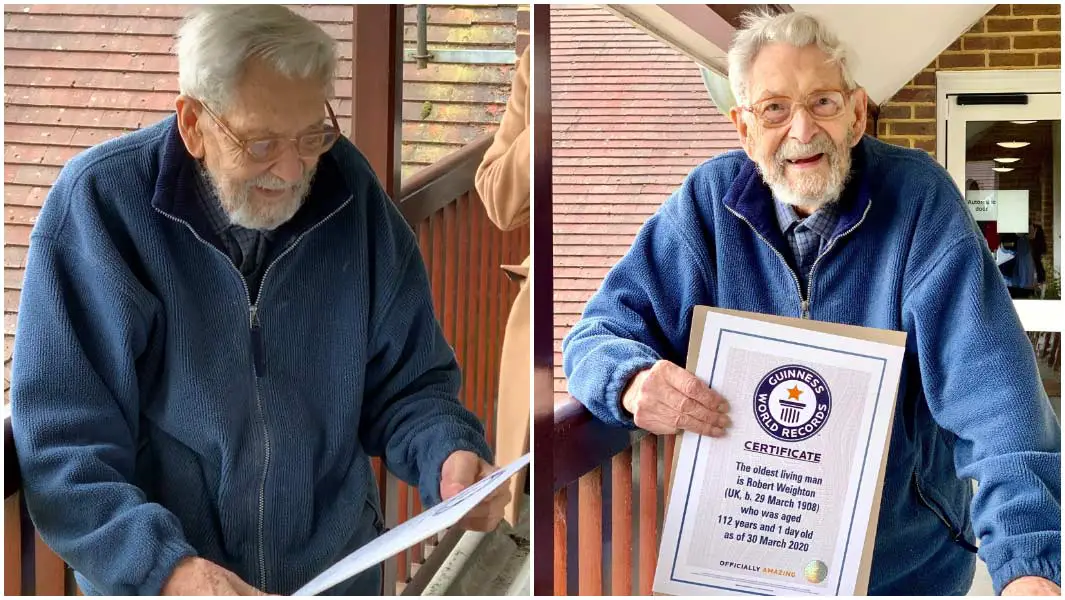

Why do people try to get into the Guinness book?
That might seem like asking why Olympic athletes keep trying to run faster, throw farther and jump higher.
Guinness says a world record is not simply a fact but a way to measure ourselves.
Knowing the biggest, the smallest, the fastest, the most and the least, it says, helps us understand our position in the world and how we fit in.
Larry Olmsted once held two Guinness records.
He set one by playing poker for 72 hours, which was a record for that card game.

He set the other for “Greatest Distance Between Two Rounds of Golf on the Same Day.”
He played golf in Australia and California — a distance of more than 12,000 kilometers.

Both records have since been broken and Larry Olmsted says he has no plans to try to recapture them.
Instead, he has written a book called “Getting Into Guinness: One Man’s Longest, Fastest, Highest Journey Inside the World’s Most Famous Record Book.”
He tells us that in writing the book he discovered the simple reason why many people want to set a world record.
“Everyone wants to be famous.
And, in a sense, while I don’t think you really become famous, from the record-setter’s perception it’s a way to be immortalized.“
That desire to live forever in a record book may not seem very surprising.
But Larry Olmsted says he was surprised to learn that very few records are published in the annual edition of the book.
“They don’t put most of the records in the book, and that really turns out to be the biggest surprise of all for people who actually set the records.
Because almost everybody sets the record with the expectation that they’ll see their name in the book, and the majority don’t, and they are very, very disappointed.“
There are 30,000 Guinness record categories, including some that are no longer active.
The company publishes about 4,000 records a year in the book and posts just 3,000 records online.
Larry Olmsted says everyone who hears he has set world records wants to know how they can set a record.
The easiest way to get into the Guinness book, he says, is to be a top athlete who is the best in the world at a sport.
Good luck.

For those interested, the Guinness World Records website has a section called Set a Record.
It says a record should be “provable, quantifiable and breakable.”
Guinness says it hears from tens of thousands of people each year who want to set a record.
Guinness officials may take more than a month to decide if they will accept a record-breaking attempt.
They reject about 80% of the applications.
If they accept a proposal, they send detailed instructions about how to confirm that a record has been set.
In some cases, someone from Guinness may come to the record-setting attempt.
If not, there should be at least two witnesses who are not friends along with a written record of the activity.
The attempt should be made in a public place.
Photographs and media reports will help prove to Guinness that a record was set.
There is a long list of records that Guinness will not accept.
For instance, they do not recognize perfect school attendance.
Nor do they recognize any activity that could harm people or animals.

Over the years, the Guinness book has had a number of competitors.
Larry Olmsted, author of Getting Into Guinness, found that most have not survived.
But around the world, he says, there is a subculture of people who spend a great deal of time trying to set or break records.
He believes that, at any given time, each record has a few hundred people either thinking about or actively trying to break it.
We asked him what record he would most like to hold.
“Uh, richest man in the world [laughs].“

Above: Larry Olmsted
The first chapter of his book is about Ashrita Furman.
Mr. Furman has been setting records since 1979.
That was when he did 27,000 jumping jack exercises.
Ashrita Furman is 56 years old and a vegetarian who manages a health-food store.
He lives near New York City in a small apartment with few possessions.
He has set records on all seven continents.
In fact, he holds the record for holding the most Guinness records.
He says he sets records so he can deepen his relationship with God.

Above: Ashrita Furman (again)
“This is my way of, you know, trying to transcend my limitations by going deep within, trying to get closer to God through meditation and through prayer and through service.
So this is my own, you might say, unusual quest, my own unusual path to get closer to God.
The records themselves at this point, really, you know, in and of themselves don’t mean anything.
At this point it’s really just for the challenge of it — for my own, you might say, personal fulfillment.”
Ashrita Furman travels around the world setting records.
His records include bouncing a ball the fastest for one mile, or 1.6 kilometers, on the Great Wall of China.

He has also completed the fastest mile bouncing up and down on a pogo stick in Antarctica.
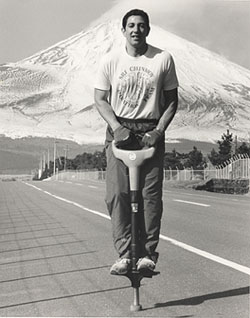
Mr. Furman has walked 80 miles, or 129 kilometers, with a bottle balanced on his head.
And in 1981 he clapped his hands for 50 hours.
In all, he has set or broken more than 340 records.
Some of these have been broken by others.
But he still holds more than 120 records and sets many new ones every year.
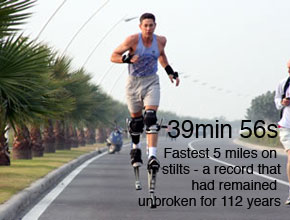
“The last few years it’s been around fifty or so.
Those fifty, many of them are physically challenging and do take sometimes up to, you know, three or four months of training.
And some of them are really very simple and involve peeling and eating a lemon in the fastest time or something like that.”
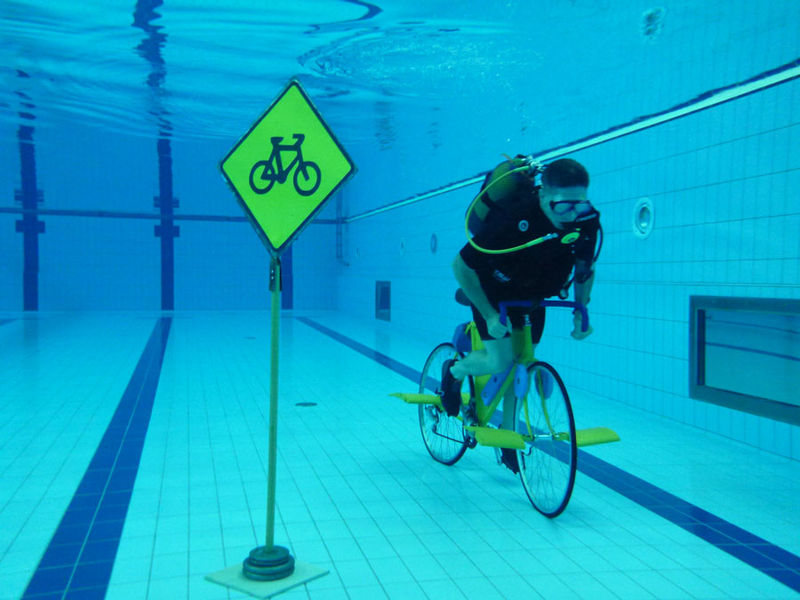
Ashrita Furman says he is happy if other people break his records.
In fact, he offers advice on his website.
He says whatever record you choose to try to break, make sure it is something you love doing and something that gives you joy.
And he offers this advice once you have chosen the record you want to set:
Train hard.
Plan ahead.
Be patient — don’t give up.
Expect the unexpected.
And learn concentration.
He says meditating has helped him set his records.
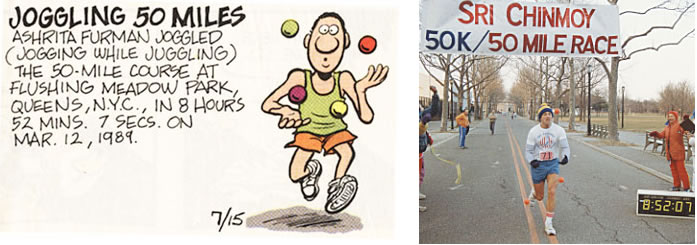
“You know, when you’re really having a good meditation you feel that you are separate from your body, that whatever is happening to that body is not happening to me — I’m the soul and I transcend that body.
To me it’s the most fulfilling thing that I can do.
It keeps me in really good shape.
It brings me a tremendous amount of fulfillment, of closeness to God.
And I‘ve had spiritual experiences in the middle of a record.
So, I never want to stop.“
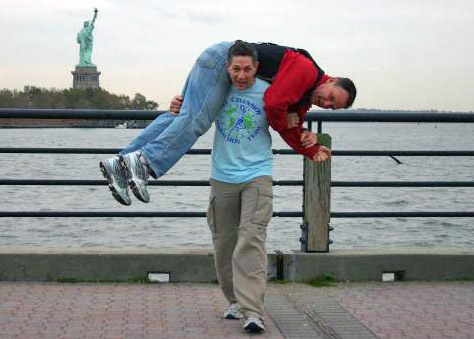
There are two basic types of records.
The first is an individual record, like being the person who made the most sausages in one minute.

There are also mass participation records, like largest gathering of people dressed as Smurfs, or most people making giant bubbles.
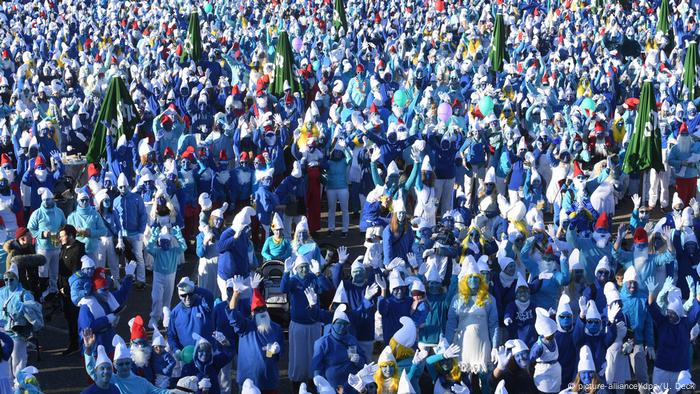
With Guinness, record-making goes hand in hand with strict adherence to the rules.
Their rules are extremely specific, and they take them very seriously — after all, that’s the only way they can keep their reputation.
They may require written witness statements, stewards, video of the entire attempt, signed statements from the event organizers, and more.
Knowing how to apply for your record and work with Guinness ensures that your attempt gets their stamp of approval and makes it into their records.
Guinness requires that you submit an application to set or break a record in advance, and that application must then be approved.
It’s not a complicated process, but it can take a while, so begin as soon as you can.
Most record breakers need to prepare at least 12 weeks in advance, and it can take 12 weeks or more after the attempt for Guinness to officially verify it.
It’s possible pay for expedited services (more on that below), but in general the earlier you start, the better.

Want to set a record, but not sure what to try?
Jason Chen, in his article What You Can Learn From People Who Have Broken World Records, notes that you should build on something you’re already good at:

If you want to be the best, it helps to start in an area that you already have some grounding and can build from.
Many of the record-breakers that I interviewed relied on this strategy.
Will Carlough holds the world record for highest score for the NES video game Ice Climber, at 1,975,670 points.
Will did not just pick up the game one day, work at it for a few months, and set the record.
As a child, he had spent years of his childhood with only a handful of video games, including Ice Climbers, giving him lots of practice with the game’s mechanics.

My personal story:
Setting the world record for Aztec push-ups was not something I attempted out of the blue.
The movement requires far more flexibility and coordination than many other fitness records.
But as a former NCAA national champion gymnast, I had already invested well over 10,000 hours of training in explosive, coordinated movements, with routines that typically took between 45 and 90 seconds to complete.
So when I found out — almost by accident — that there was a record for most number of Aztec Push-Ups in one minute (31), I was able to quickly top the figure (the record I set is now 50).
You could say I had been training for Aztec push-ups my whole life.

Above: Jason Chen
The Records Showcase highlights some of the range of records Guinness will certify.
It’s important to note that there are some types of records they won’t consider.
You should definitely read their list of common reasons for record rejections, which includes a list of the kinds of records that aren’t eligible for certification.
There are two types of record attempts — breaking an existing record, or setting a brand new record.
The first part of the application process involves a search to find out if the record you want to break already exists.
If it does, you can apply and then they send you your guidelines.
It doesn’t cost anything to break an existing record, unless you want to pay for additional services from Guinness.
If the record you want set doesn’t exist yet, you’ll have to apply to set a new record.
This can significantly extend your wait time so, again, start early.
You’ll pay at least $5 for getting approval on a new record and setting it.

Guinness offers three basic options for setting a record.
Account Managed Services
Also listed as “invite an adjudicator” on the Guinness site, this is the fastest and most expensive option.
You get a dedicated concierge to guide you through the process, and an Official Adjudicator (judge) at your event (which, as you’ll see below, saves you a ton of work.)
Your application, evidence, and questions will receive immediate review and response.
You get a certificate presentation at your attempt, and licensing of the Guinness logo.
The cost varies (they only provide a price upon request), but it is thousands of dollars.
This option is mostly used by businesses and organizations that are using the Guinness Record attempt to generate awareness and publicity.

Priority Services — Application Review and Evidence Review
Priority services are options for completing your application and submitting your materials yourself — you don’t get the dedicated concierge.
One is to help you with the application process before you attempt the record.
The other is to help you with the review process after your attempt.
The first is an expedited application review, which gets your application reviewed (and hopefully approved) in just five business days rather than 12 weeks.
It currently runs $800 USD for breaking an existing record (more if you are setting a new record).
After your attempt, you can also purchase expedited evidence review for about $650 USD.
This gets your record attempt reviewed within five business days, rather than waiting for 12 weeks.
With both priority services, you also receive priority support, so you get any questions answered in two working days.
This option is generally used by groups, or by people who need to complete their record by a specific deadline.
Standard Application
This is the cheap one.
New records cost $5 USD, but otherwise there is no charge for this option.
It just takes extra time.
After your application is accepted, it typically takes at least 12 weeks to get your specific guidelines for setting the record.
Then, after your attempt, you submit your evidence and it takes at least another 12 weeks to find out if your record is certified.
If you have questions during the process, it typically takes two weeks to get them answered.
Remember:
Guinness is basically in business to sell their record books and generate enthusiasm for record-setting.
A spectacular setting, dramatic photos, and a good story can all make your record more appealing for them to feature.
An important thing to keep in mind about your application is that when it is approved, Guinness will send you important details about what you have to do to claim the record, as well as information about the documentation they will require to certify it.
You need those details to plan your attempt.
Congratulations on getting your application approved.
Now the real fun — and the extremely detail-oriented record keeping — begin!

Complicating things a bit, there are two different places to find the rules you’ll need to follow.
The first will be your Specific Guidelines — you’re going to want to read this at least two or three times.
Consider having a friend read it for anything that you missed and create a checklist.
The Specific Guidelines are what Guinness requires you to do for this particular record.
You may find some surprises here.

You’ll also want to access and download the Guide to Evidence.
Reading and understanding this document is essential.

You might need a lot of crew for a mass record-breaking attempt.

Make sure that you have any equipment that you need.
If you are organizing the attempt specifically to set this record, you cannot plan too carefully.
If there is anything that you think is impossible (for example, there is no way for you to have a video camera on you for your entire Kilimanjaro climb), e-mail your Records Manager using the “Correspondence” section on your Guinness page, and they can help.

Above: Mount Kilimanjaro
When it’s “go” time, you’re going to want to be able to focus all of your energy on your attempt.
In order for that to happen, it’s important to have a solid crew.
The more people who are involved in the attempt, the more important a good crew becomes.

I really can’t say it enough: read and understand your Specific Guidelines and Guide to Evidence, and have every willing crew member read it as well.
If you have witnesses who are just coming in just for the attempt, make sure that they clearly understand what is required of them.
Improperly completed witness statements can ruin your attempt.

Lay out everything the night before, read the Guidelines one last time, and have a final check in with your crew about what’s going to happen tomorrow.
You and I both know that you’re already officially amazing.
Now, because you are well-prepared, you get to prove it to the world!
During the attempt, get pictures and video of literally everything.
When your attempt is finished, check through the paperwork very carefully. If you are going to be exhausted, you should plan for a trusted crew member to do this for you.
- Do you have all the witness statements?
- Did you get any signatures that you need? For some records, forms can be filled out electronically.
- Do you have the pictures and video that you need?
If so, you’re ready for the final steps of getting all your evidence to Guinness.
It’s time to bring this baby home.
Log into your account on the Guinness website, scroll to the section that says “Evidence” and click on “Upload Evidence”.
You’ll enter all of your information.
You cannot submit video evidence through a file sharing site, so you’ll need to upload all of your video evidence directly to their site.

You can also choose to pay for expedited review services when you submit your evidence, as noted above.
Remember, submit the best photographs you can to increase your chances of getting them into the book.
Now, the wait begins.
If Guinness staff have any questions, they’ll contact you.
Otherwise, you’ll get your answer somewhere between five business days and 12+ weeks—depending on the record review option you chose.
Keep checking your page and, at some point, “Pending evidence” will be updated to “The current record is…”
(You should also get a notification email.)
Congratulations, you are a Guinness World Record Holder and Officially Amazing!
You can order your complimentary certificate by logging into your account and then going to the Guinness World Record Store.
Your free certificate should already be in your basket.
If not, contact Guinness.
You can order more than one certificate for £20.00 or about $26 USD each, plus shipping (at the time of this writing).

If you are a participant in a mass participation record, you won’t automatically get your own certificate.
But you can purchase a “Certificate of Participation” by doing a look-up on the event and then entering your name to have it custom printed (this also costs £20.00 or about $26 USD, at the time of this writing.)
So that’s it.
Unless, of course, you want to try for another record!

The world has a new steepest street!
But it’s more than 1,000 years old.
So, did something happen to the previous steepest street?
Is this an off-colour attempt to look on the bright side of a horrendous natural disaster?
No, the previous steepest street is still there.
So, has the old one somehow got less steep, perhaps because of a horrendous natural disaster?
No, it’s as steep as ever.
There is no horrendous natural disaster involved with this story.
So what’s happened?
Well, a street has been discovered that’s steeper than the street that, for some years, has been proclaiming itself to be the world’s steepest street.
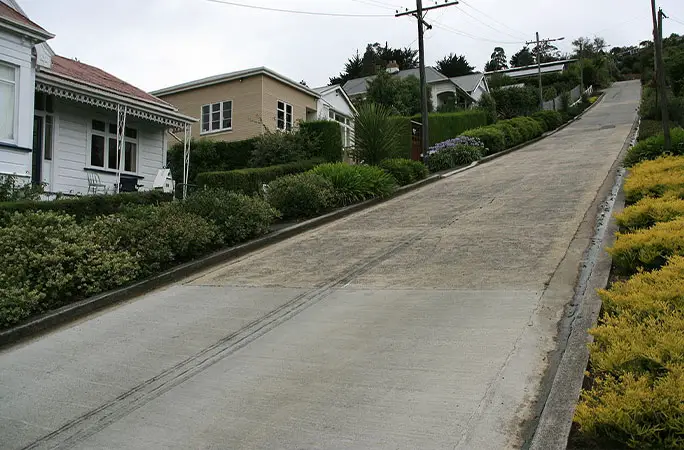
But how can a street be discovered?
Was it buried?
Is it part of a newly unearthed hilly suburb of Pompeii?
No, stop trying to link it to horrendous natural disasters.

Above: Pompeii and Mount Vesuvius
The new steepest street has been in continuous occupation since time immemorial.
Much longer, in fact, than its predecessor as holder of the accolade.
So, the fact is – and I hate to be rude about what we now know is, at best, the second steepest street in the world – that this predecessor was an impostor, a usurper, albeit an unknowing one.
It was never steepest.
Even on the day of its construction, a steeper street already existed.

Fundamentally, this is a damning indictment of the system by which the title of world’s steepest street is awarded, a process that, slightly suspiciously, appears to have something to do with Guinness.
Common sense suggests that Guinness is not a substance likely to be of help in the global ranking of gradients in built-up areas.
I should clarify that there is no suggestion that the whole steepest street issue got screwed up because everyone involved was off their face on Guinness, or even that their concentrations were marginally impaired by the responsible enjoyment of Guinness.
They may not have drunk any Guinness at all.

The link with Guinness is pretty tenuous.
Guinness World Records, formerly the Guinness Book of Records, isn’t even owned by Diageo plc (which owns Guinness) any more.
But the fact remains that it’s called Guinness World Records because of Guinness, the drink, not because of a random Andrew or Steve or Janet Guinness who loved measuring things and decided to put them all in a book.
So there’s Guinness all over this mess and perhaps we all ought to think about that before we buy any more Guinness.

It turns out, you see, that when a street claims to be the steepest in the world, Guinness World Records is rigorous about the evidence of the street’s existence and precise steepness that must be provided.
So when the advocates of Baldwin Street in Dunedin, New Zealand, (until recently proclaimed the world’s steepest street) said it had a gradient of 35%, that assertion was carefully verified as was the fact that it is genuinely a street rather than a random strip of mountainside devoid of asphalt or dwellings.
Where the rigour lapsed, however, was in failing to check whether there were any other streets that were steeper.
It’s a strange lapse, when you think about it.
It seems so obvious:
In order to know which is the world’s steepest street, you need to measure the steepness of every street in the world.
Now, you may say that that is one hell of a logistical challenge.
Who’s going to pay for that to be done?
Not Diageo plc.
And the wearying expense and difficulty is, to my mind, only compounded by the undeniable truth that finding out which of the world’s millions of streets happens to be steepest is a colossally unimportant task.
I would have been content with a state of affairs where everyone agreed that Baldwin Street in Dunedin is certainly jolly steep, and probably a lot steeper than most streets, and we left it at that.

The problem came in choosing to elevate that undeniable status to “world’s steepest street” without knowing how steep all the other ones were.
It’s a strange mistake for a records organisation to make.
You’d think that Guinness World Records, of all institutions, would be well aware that a person or thing being very [insert adjective] does not make it particularly likely that they are the most [insert adjective] in the entire world.
The tallest bloke you’ve ever met is almost certainly not the tallest man on Earth.
He might be, but you really have to check.
You can’t just watch him fetch a football off a garage roof, say “Wow” and then stick it in your book – not if you think that being accurate about these records matters.
Personally, I don’t think it matters, but I’d expect the people running Guinness World Records to think it does if they want to cling on to an iota of professional pride and aren’t just in it for all the free Guinness they probably no longer get.

There are other people it seems to matter to as well because, bizarrely, being named the world’s steepest street actually generates a bit of tourism.
Some people want to go and see the world’s steepest street.
More people than want to avoid it.
I don’t really understand why.
Steep is a bad thing for a street to be.
Streets are supposed to facilitate access to houses or shops.
The steeper it is, the less well it does that.
It would be like being the street with the worst maintained road surface in the world or being littered with the greatest density of impacted chewing gum.

Nevertheless, there is genuinely a small amount of sadness in Dunedin that Baldwin Street has lost its status and a small amount of joy in Harlech in Wales that a very old street there, called Ffordd Pen Llech (which looks like more of a lane if you ask me), has been confirmed as always having been steeper.
But how long can that joy last when the majority of the world’s street gradients remain unmeasured and unverified?
What a precarious position:
Constantly worrying about losing the title if another street proves it’s in a more precarious position.

Last summer the townsfolk of Harlech, in northwest Wales, were celebrating the accolade of having the steepest street in the world.
A mere eight months on, they are in the doldrums after being informed by Guinness World Records that a New Zealand rival for the title has usurped them.

Above: Harlech Castle
Baldwin Street in Dunedin has reclaimed the record after persuading the record after persuading Guinness World Records that a New Zealand rival for the title has usurped them.
Baldwin Street in Dunedin has reclaimed the record after persuading Guinness to update its rules on measuring inclines.

Above. Images of Dunedin, New Zealand
Gwyn Headley, who led Harlech’s campaign to claim the title for Ffodd Pen Llech, did his best to be generous to Dunedin, but the loss clearly hurt.
“Blinking back the tears, we would like to congratulate Baldwin Street for winning the record under the new dispensation,” he said.
Headley said he was upset that Guinness had decided to rule in favour of Dunedin before giving Harlech a chance to argue its case.

Residents in Harlech, best known for its castle and the rousing song “Men of Harlech“, had long battled for the record.
Myrddyn Phillips, a surveyor and expert on mountain measuring, did much of the on-the-ground work.
He used a combination of hi-tech (a satellite dish) and low-tech (chalk to mark out key points and bricks to keep a tripod steady) to take a series of measurements.

To qualify for the title, the street or road must be a thoroughfare that is commonly used by the public, who must be able to drive vehicles across it.
Ffordd Pen Llech is flanked by 300-year-old houses and is an ancient route to the castle.
Baldwin Street in Dunedin, located in an otherwise quiet valley of the South Island city, has long attracted daredevils and adventure sports enthusiasts, prompting the local council to upgrade infrastructure and residents to launch cottage industries to launch cottage industries selling food, drinks and souvenirs.

Last summer Harlech celebrated after it was established that its street had a gradient of 37.5% at its steepest point, compared with Baldwin Street’s 35%.
In November 2019, a Dunedin surveyor, Toby Stoff, visied Harlech on a fact-finding mission and made the case to Guinness that the best way to measure a street’s gradient was from the centre line of the road rather than at any point along the sides.
Guinness agreed and concluded that Baldwin Street had the steeper gradient, 34.8%, compared with Ffordd Pen Llech’s 28.6%.

New Zealand has the longest placename in the world and now the steepest gradient.
For some reason this bothers the Welsh.
But you cry out:
“It’s only Wales!“
Yes, perhaps so.
But take away what makes something, somewhere, someone special, you take from them a reason to be proud of the differences that make them unique.
Funny how we need statistics to boost our self-image.
Funny how this really isn’t what matters.

Sources: Wikipedia / Google / Ragen Chastain, “The Complete Guide to Getting Your Own Guinness World Record“, https://medium.com / better-humans, 10 December 2018 / Christopher Cruise and Barbara Klein, “What drives people to try to get into the Guinness Book?“, http://www.learningenglish.voanews.com, 15 May 2011 / David Mitchell, “Guinness World Records is on a slippery slope“, The Guardian, 21 July 2019 / Steve Morris, “Welsh street loses world’s steepest title“, The Guardian, 8 April 2020
